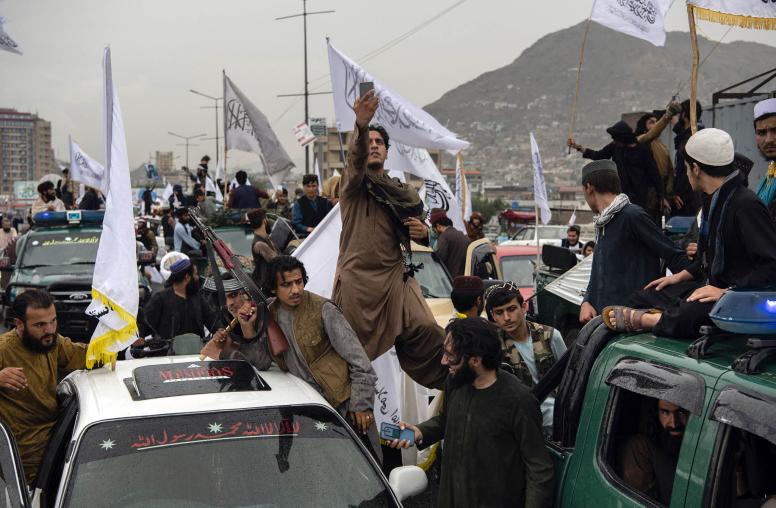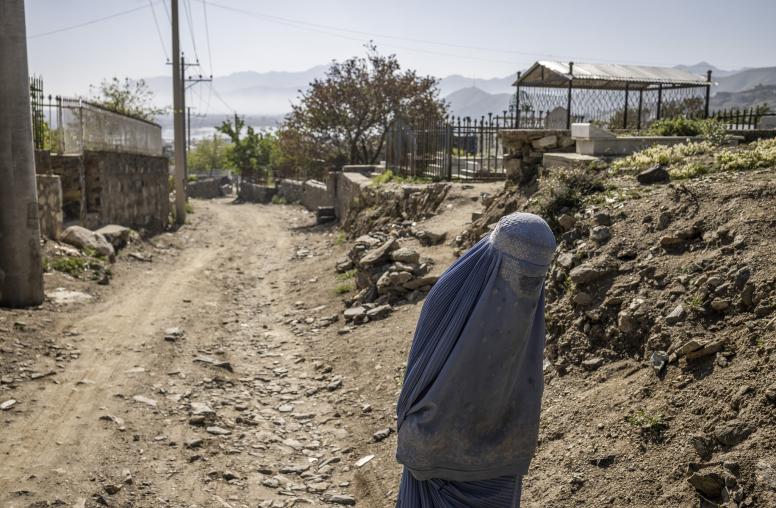When students at Afghanistan’s Nangarhar University organized a blood drive last fall to protest their country’s civil war, so many donors lined up that the blood bags ran out. “Stop Bloodshed and Donate Blood to Save Lives,” the event declared. On a campus where some students have demonstrated in support of the Taliban and the Islamic State (ISIS), the rally against violence became a story on local radio and television, and on social media.

The blood drive, the protest against violence—and even the existence of a student group for peace—were remarkable shifts at Nangarhar, Afghanistan’s second-largest university and one of its most influential. Militant groups such as ISIS and the Taliban are active in Nangarhar, which borders Pakistan. In 2015, the university, which has 15,000 students, saw hundreds of people join demonstrations in support of both militant movements.
Peace Education vs. Extremist Recruiters
The student peace organization sprang from the university’s introduction last year of a peace education course developed with the U.S. Institute of Peace. Fifteen years after the overthrow of the Taliban regime, Afghanistan’s university student population has ballooned, and its roughly 50 universities form a critical arena in the struggle for the country’s future. Yet Afghan universities have lacked courses or student organizations dedicated to opposing extremist ideas and to building peace across the ethnic, sectarian and other divides exploited by militant groups.
“A national movement for peace education at universities is important for building a generation of Afghan leaders who can oppose extremists without violence and can help to heal and develop their own country,” said Scott Worden, director of USIP’s work in Afghanistan.

That national movement has grown in the past year as Nangarhar in the east and Herat University, the preeminent university in western Afghanistan, began courses in peacefully resolving conflict. Those institutions are building on a model created over four years by USIP and a private university, Gawharshad, in Kabul. The three universities are forming a unified curriculum to submit to the Higher Education Ministry for use nationwide. At USIP’s Kabul office recently, six teachers from the universities bustled around a table loaded with notebooks and laptops to write the new curriculum.
Gawarshad has made its course, “Peacebuilding and Conflict Resolution,” mandatory for all students and offers it as well to students from other universities in Kabul. More than 2,000 students have been trained.
Afghanistan has strong ethnic and tribal traditions of peaceful conflict resolution. But 40 years of warfare, and the absence of university organizations and courses promoting peaceful conflict resolution, have made it easier for extremist groups to shape political culture on campuses. “Students are vulnerable to the pressures brought by politics and war in Afghanistan,” says Hamidullah Natiq, an education specialist who manages USIP’s peace education programs in the country. “They are easily manipulated by extremist groups, but the peace education course teaches nonviolent strategies to empower students to fight for their rights in civic and democratic ways, rather than resorting to violence.”
Students Work in Communities
Students say peace education courses have had an impact both on university campuses and in outside communities, where local conflicts often are exploited by the Taliban, ISIS or other groups to radicalize local residents.
But the courses’ impact begins by changing the students’ own mindsets, often as their first examination into how they fall into conflicts themselves and can resolve them. This includes skills like “conflict mapping”—interviewing and analyzing participants in a clash to sift out their real goals, which may be different from those they articulate. Digging down to those real objectives is a first step to negotiating a solution.
Students have moved quickly to use these skills on conflicts within their families or localities. Abdul Nasir Folad came to Kabul from Afghanistan’s ethnic Hazara region and studied political science at at Kabul’s Ibn-e-Sina University. Last year, he took a USIP peacebuilding course and since has worked as a one-man peace agency in his Hazara community and among Kabul youth. He has run workshops to teach peacemaking skills to what he said are about 400 other Afghans in youth groups and community associations.

Within his Hazara clan, Folad works with an elder, Haji Mohammad Ali Wafayi, a former commander among the mujaheddin guerrillas who fought Soviet occupation in the 1980s. Wafayi now leads in a tribal association representing thousands of Hazaras from Folad’s home region.
Folad underscores the need to build reconciliation in Afghanistan from the grass roots. “Only peace can give Afghanistan the opportunity for a strong government, and to achieve it we need first of all to change the mindsets of Afghan people.”
‘The Most Impact’
In Afghanistan, as elsewhere, extremist ideologies present themselves as the only way to repair corrupt, unjust, or oppressive societies. Young people frustrated with those conditions may see no alternative way to change them. But the peace education classes have helped create an alternative: community and civic improvement campaigns through peacebuilding organizations that have sprung up at each campus.
The Nangarhar University group that organized the blood drive is called Youth Peace Leaders. In Nangarhar, a conservative province where traditional patriarchy is strong, the group’s weekly meetings are a rare opportunity for young men and women to simply to talk together and learn from one another. Previously, “there were not many opportunities for us at all,” said Muscana Sari, a woman student. “Now we meet regularly to discuss and engage in dispute resolution.”
Many Nangarhar students once fraternized with extremist groups that recruit actively in the province, said Ahmed Jamal Popal, the university teacher who supervises the club. “Through our weekly activities—cricket matches, volunteer clean-ups of public spaces, blood-donation drives—the university is helping cut the students’ connection with extremism.”
Across the country one day last winter, Armond Qadri worked with other members of Herat University’s Peace Club to plan what he said were 36 projects for the coming year—a city park dedicated to peacemaking, community clean-up work, a radio program called Voice of Peace, blood drives, and training for journalists. Last year, the Peace Club sent a delegation on a 10-day trip to India, where the Afghan universities are building partnerships with several organizations centered on the non-violence teachings of Mahatma Gandhi.
Back when Qadri first heard of the peace education course, he said in an interview, “I thought this program would come and go, like all the programs that we see from [international] donor organizations.” But as the course has spun off an energetic network of civically engaged students and Herat citizens, he said, “this has had the most impact during my time at Herat University.”
Joshua Levkowitz is a program officer with the U.S. Institute of Peace in Iraq. He was previously a senior program assistant with the Institute in Kabul.



